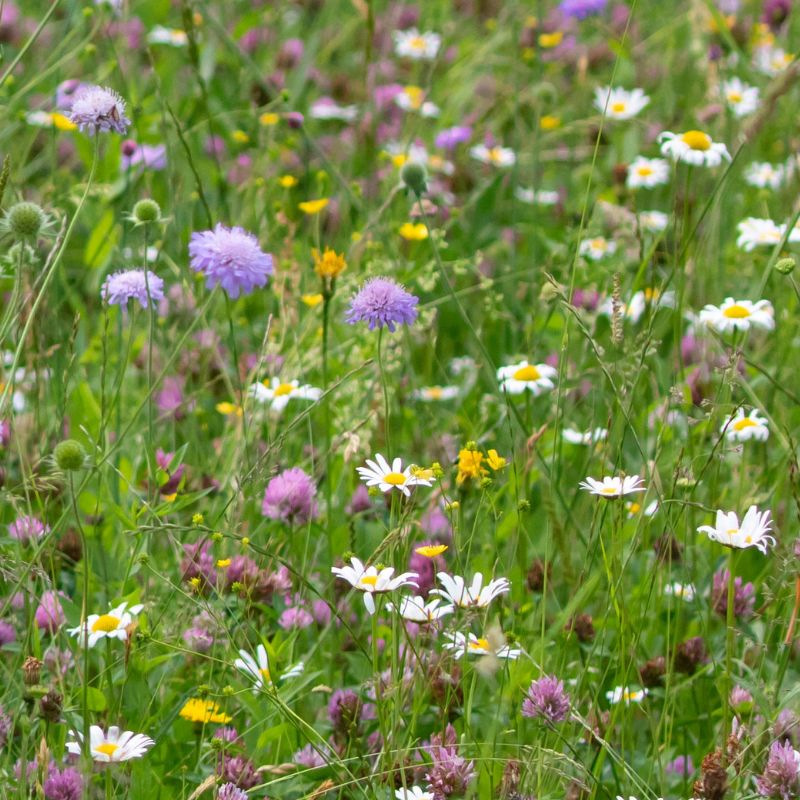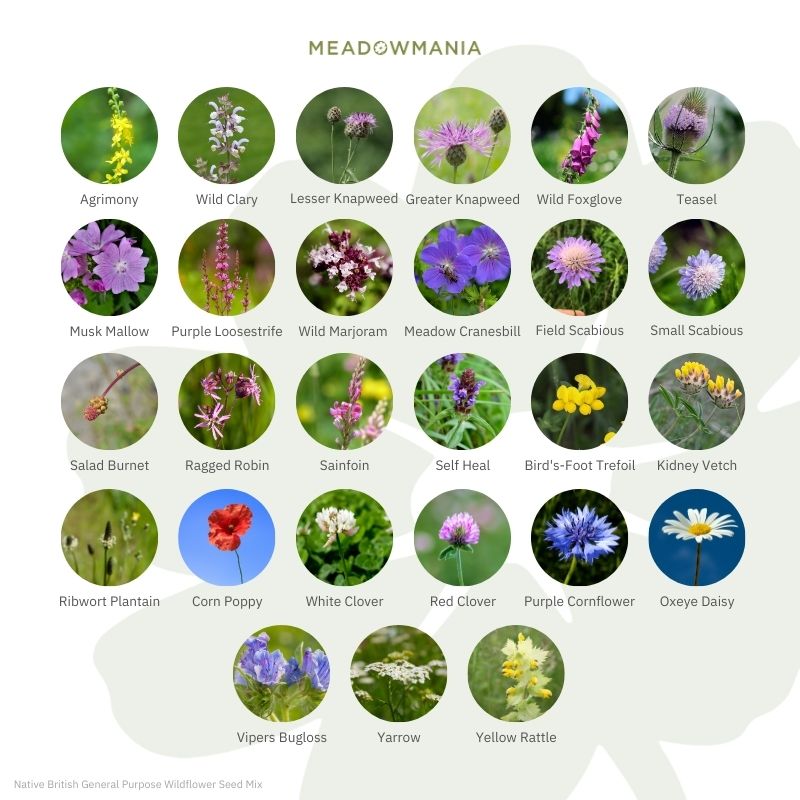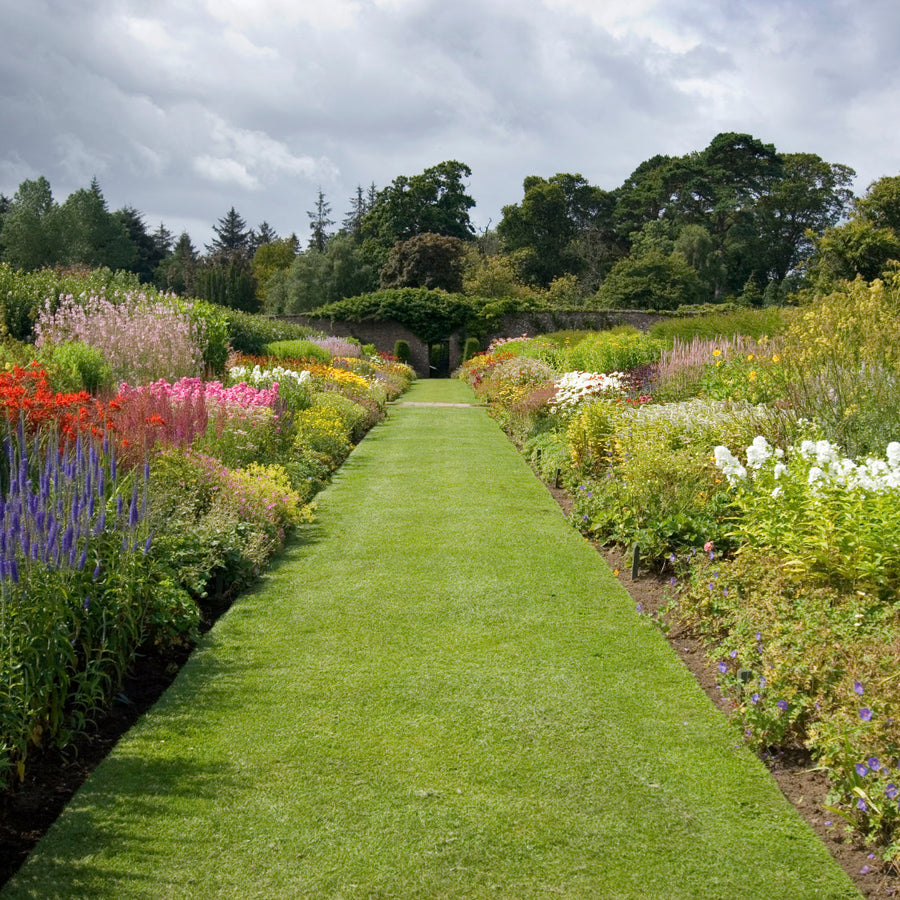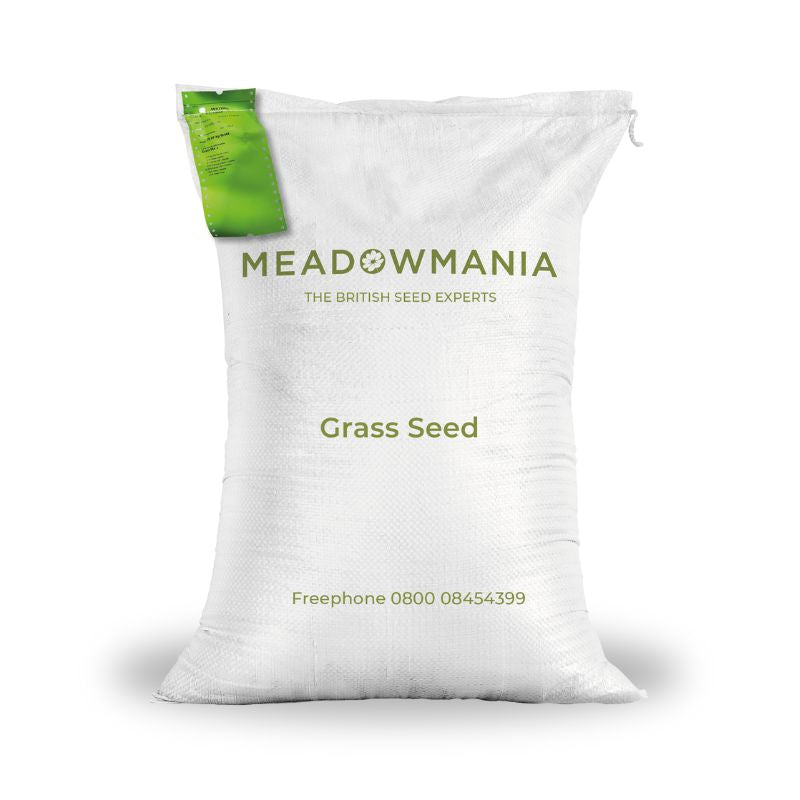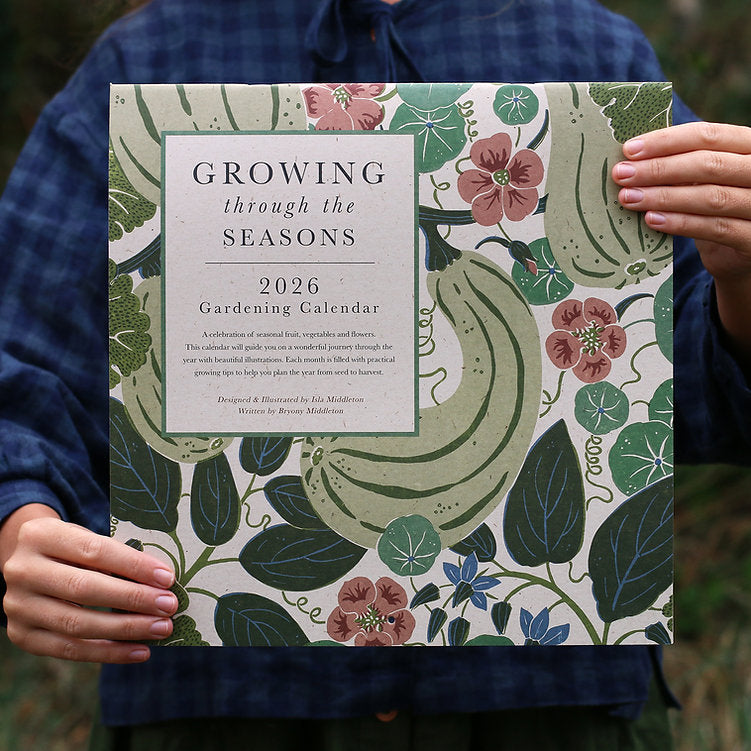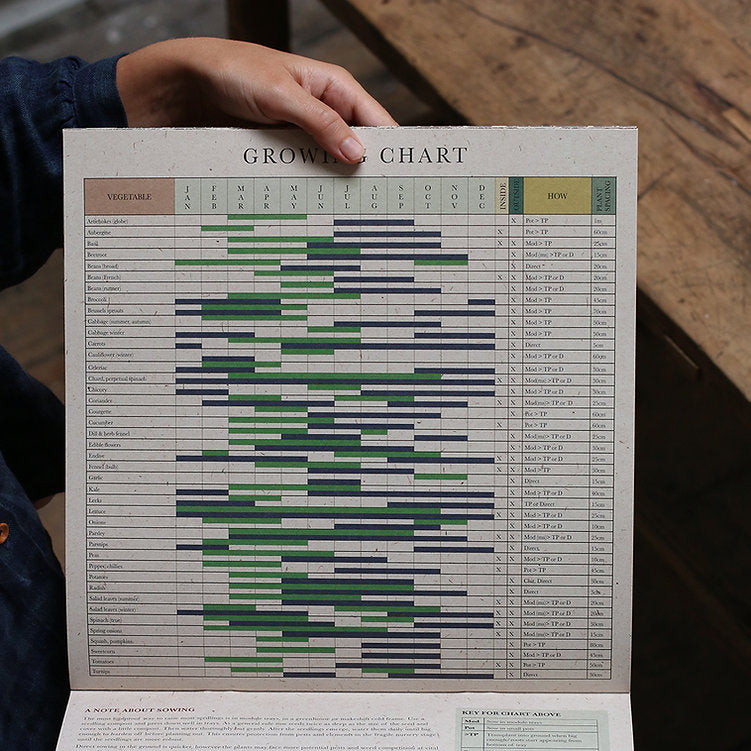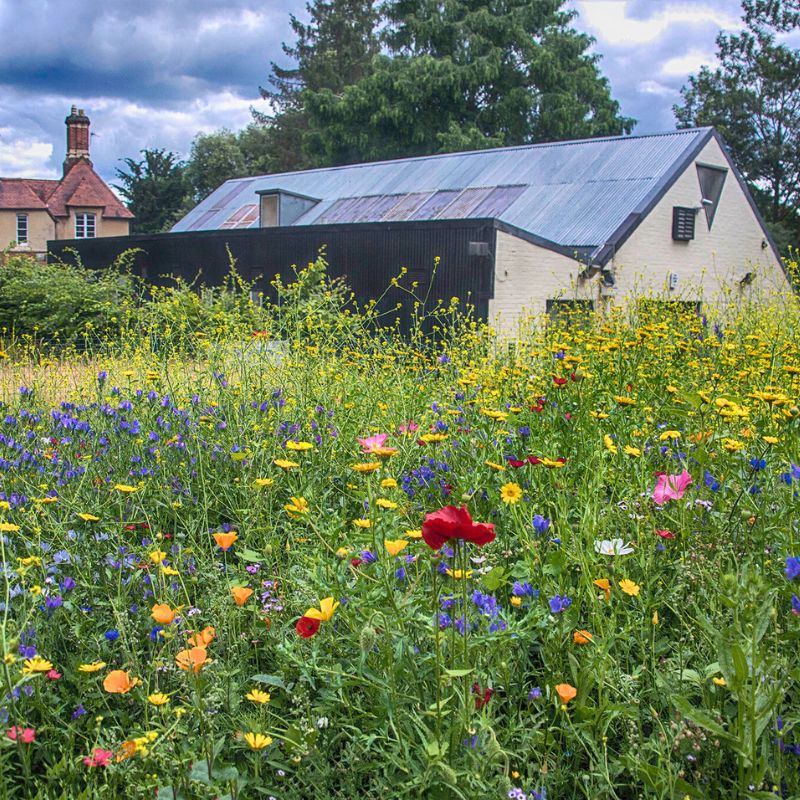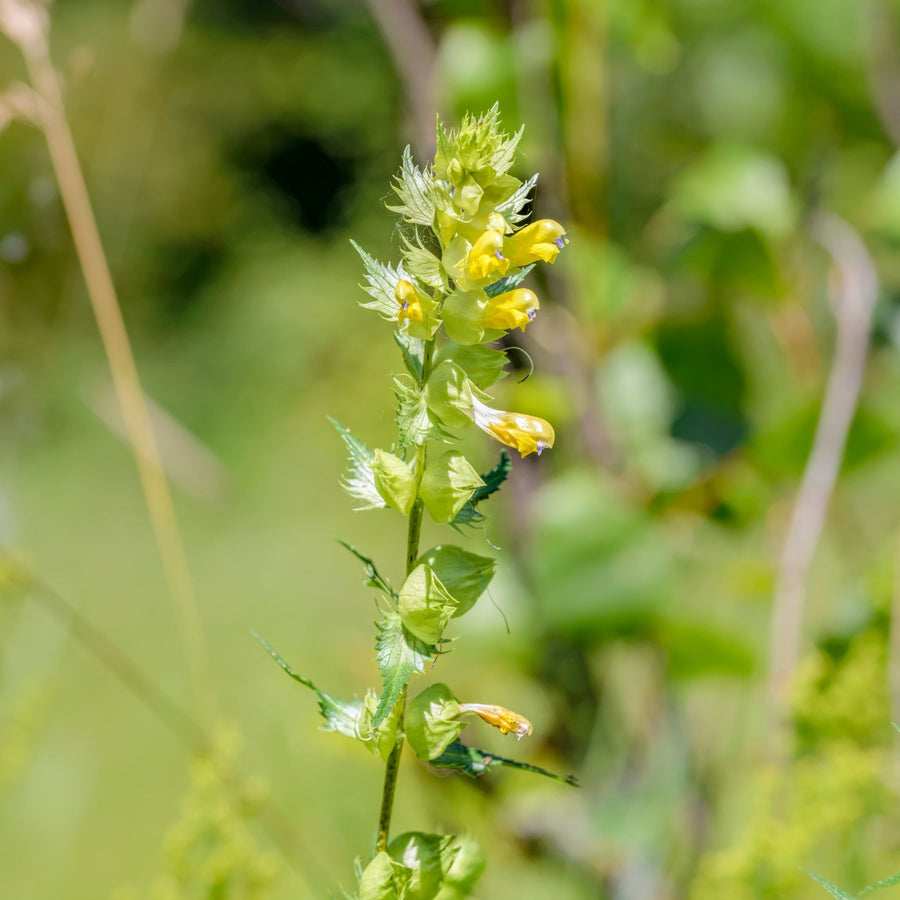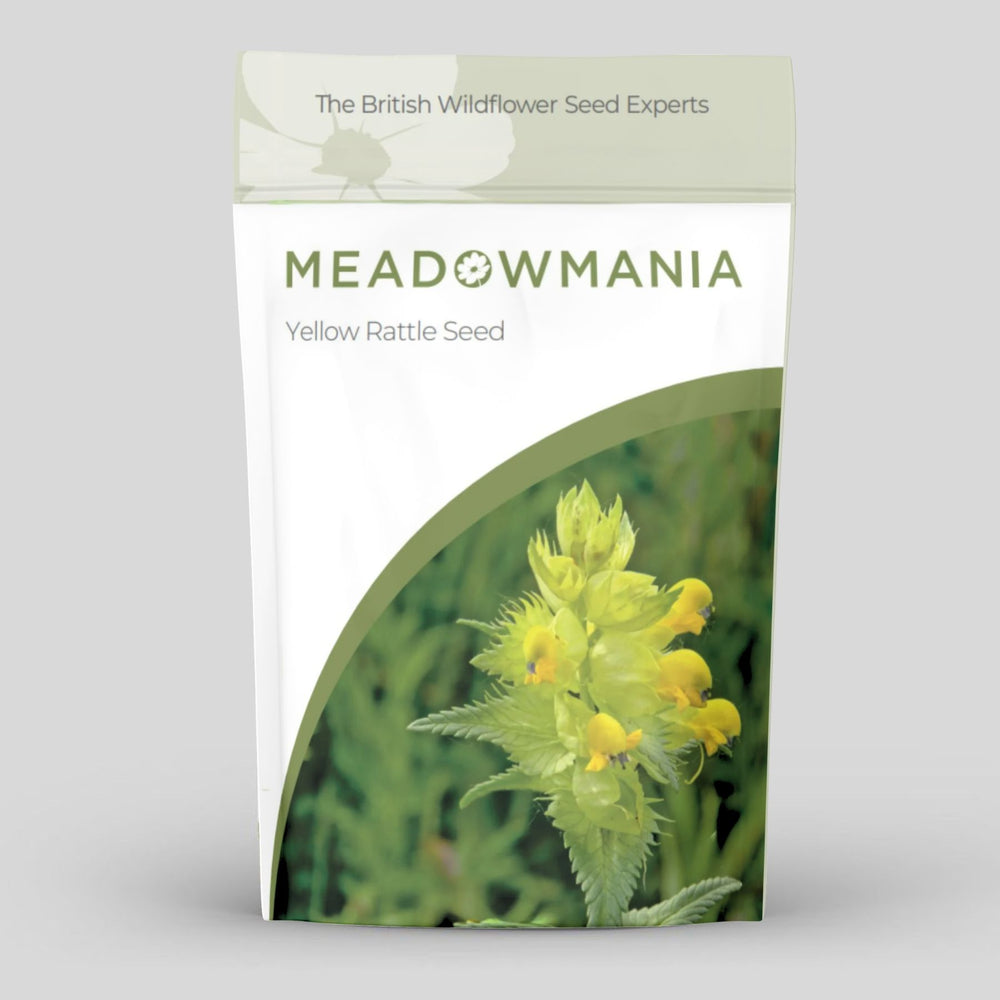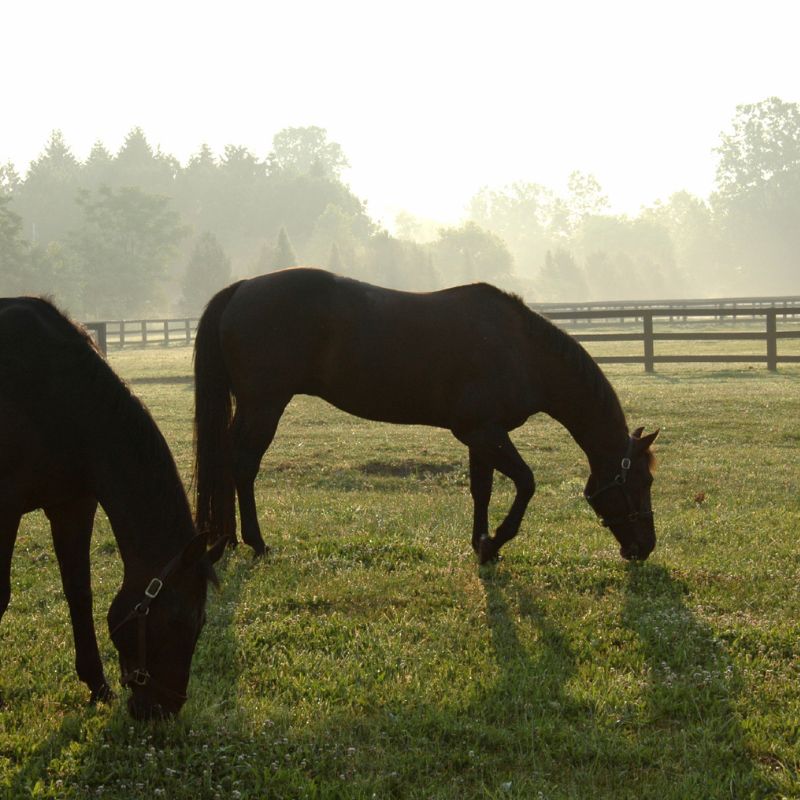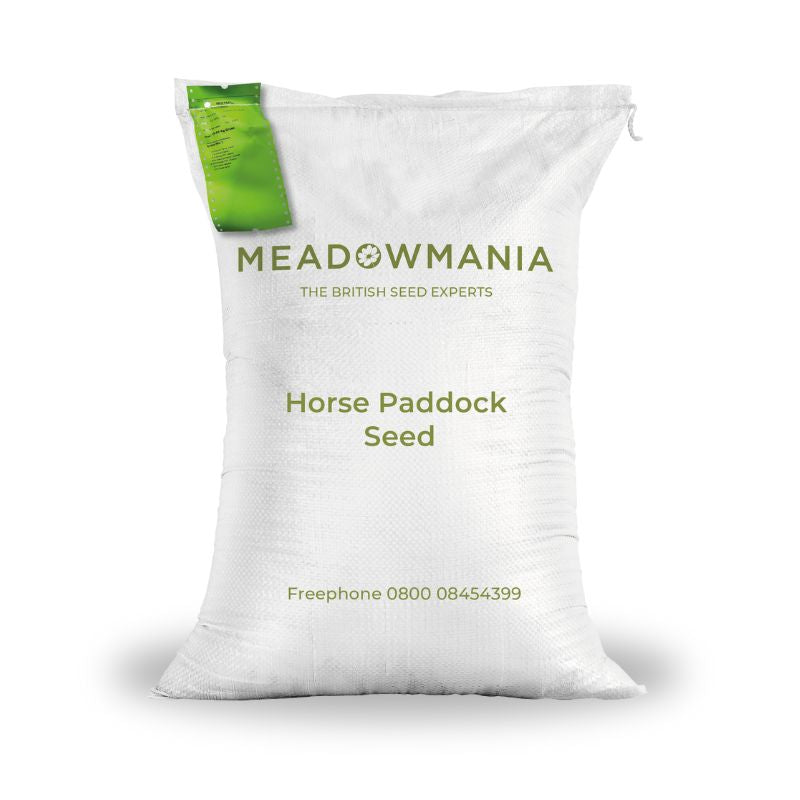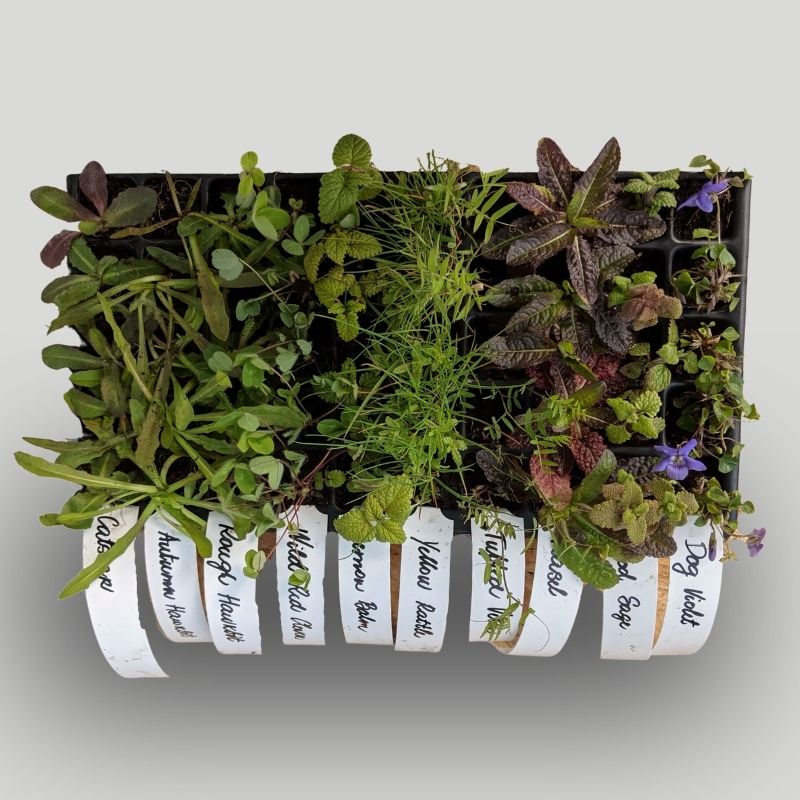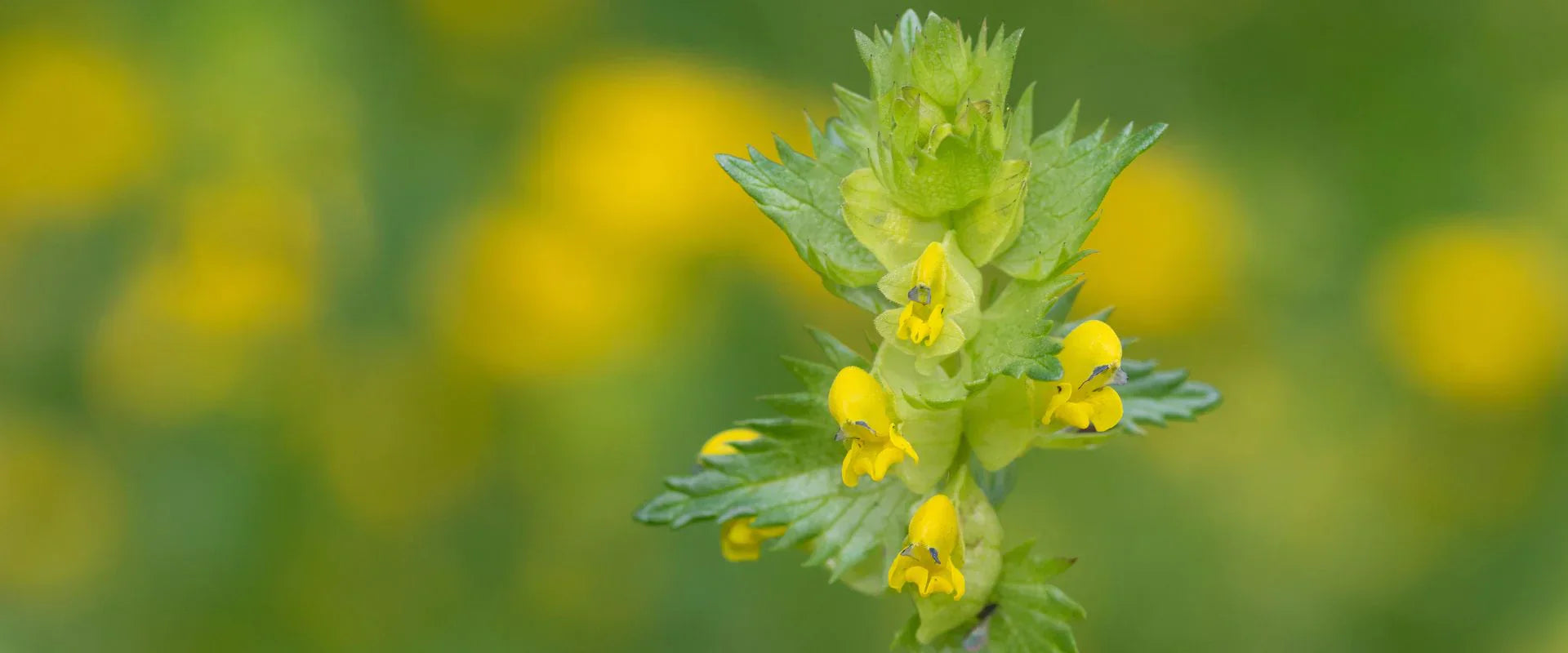
Using Yellow Rattle to Reduce Grass Growth in a Meadow
The Benefits of Yellow Rattle
Also known as ‘The Meadow Maker’ or hay rattle, yellow rattle is vital in helping to establish and maintain a naturally beautiful, species-rich wildflower meadow.
A hemi-parasitic (partially parasitic) plant, it grows alongside grass, its roots penetrating the roots of the host species and drawing water and nutrients from them. This reduces their vigour and prevents them from out-competing the wildflower species. Without yellow rattle, the vigorous grasses in a meadow will soon take over at the expense of the wildflowers. Using yellow rattle in a suitable location can increase the likelihood of establishing and maintaining a flower-rich meadow.
For this reason, it is important when establishing a wildflower meadow to build a yellow rattle colony. It might take a couple of years for numbers to grow to an effective level.
Yellow rattle is a native annual plant. It germinates in the early spring and flowers between May and July, and then sets seed between July and August when it reaches the end of its lifecycle.
Yellow rattle seeds do not remain viable in the seed bank for long and colonies of yellow rattle can quickly die out if they are unable to germinate for a couple of years.
If converting an existing area of grass or lawn to a wildflower meadow, it's a good idea to introduce yellow rattle a year or so before sowing perennial wildflower seed. This allows the numbers of yellow rattle in the sward to grow to an effective level. Once the numbers are over 100 plants per square metre other wildflower species can be sown.
Alternatively, yellow rattle can be sown as part of a wildflower meadow mix.
Sowing Yellow Rattle
Yellow rattle seed must be sown in the autumn as it needs to be chilled through the autumn to trigger its germination the following spring; a process known as vernalisation. If it is being sown in early spring, it should be placed in a fridge or freezer for a couple of weeks to mimic the cold of winter and trigger germination.
Sow at about 0.5 grams per square metre.
Prepare for sowing by cutting the grass very short (25mm) or by grazing hard. Next, open up the site for germination by harrowing, raking or lightly disking. Aim to create up to 50% bare soil. Broadcast the seed onto the prepared surface and, if possible, roll afterwards to consolidate.
Yellow Rattle Seed
The best germination rates are achieved from the freshest seed, so it is important to sow yellow rattle seed from the current year’s harvest.
Establishing Yellow Rattle
Yellow rattle needs a chance to set seed each year. Cutting or grazing too heavily between April and mid-July will eliminate yellow rattle by preventing it from seeding and so should be avoided. Traditional meadow management should be based around an early August hay cut. This provides the species with the best opportunity to set seed.
In the first few years of establishing yellow rattle in your meadow, the number of plants can climb quite rapidly. This could continue for some years until the grass vigour declines which will naturally reduce the spread of the yellow rattle.
Yellow Rattle Plug Plants
Yellow rattle plug plants are available in the spring or to pre-order throughout the year. They are grown in cell trays along with a grass seed and are sent out from our nursery in April.
This can be an effective way of adding The Meadow Maker to a smaller meadow area or a garden.
We recommend planting up to five plugs per square metre. Plant them out in their final position within a few days of receipt and water them well for a couple of weeks until the roots are established. They should then grow up quickly.


